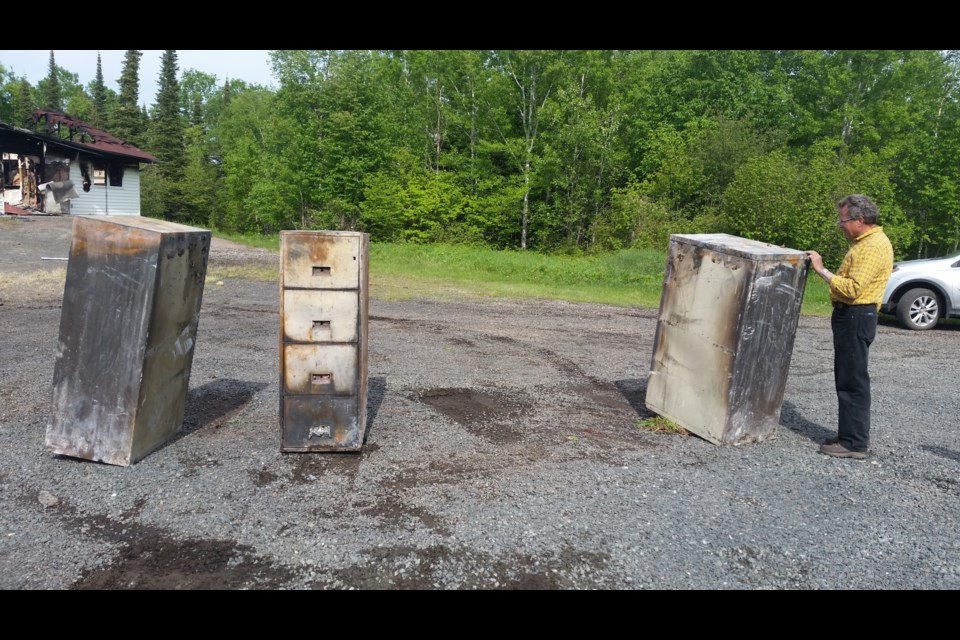PASS LAKE, Ont. — A day-long effort to preserve the community's historical records resulted in the only good news out of an otherwise tragic event for the tightly-knit community of Pass Lake.
Tuesday's fire razed the 90-year-old Salem Lutheran Church to the ground and all but destroyed the attached hall.
Pass Lake firefighters knew that decades worth of documents, going back to the 1920's when Danish immigrants moved to the area, were stored in the hall basement.
Worried that the floor would collapse, Fire Chief Brendan Grant said "we worked all day to try to contain the fire in the section of the building above the basement where the records were kept."
The papers were in five large filing cabinets, and included letters, birth certificates, photos and other unique documents from the original settlers.
The crew was unsure if the records had survived the inferno until late in the day, when it became safe to take a closer look.
As it turned out, the cabinets were scorched, but the documents were safe.
"Once things were cooled down, we got a backhoe and lifted the cabinets out carefully. That was the only real success of the day, other than that nobody got hurt," Grant said.
He said preserving the records was a gratifying outcome.
"We can rebuild the church...but those documents are the complete chronicle of the development of this community. There are no other records. There's no duplicate. There's no digitized version. They are the record."
On the website of Federation of Danish Associations in Canada, an account by Rolf Burschardt Christensen outlines some of the history of the settlement:
Land clearing around Pass Lake, Ontario (60 kilometres east of Thunder Bay) began in 1924 by Danish settlers. In order to obtain the deed to their homestead, the settlers had to build a house and barn; clear and farm at least two acres of land during each of the first three years; had to live on the land at least six months of the year and also obtain citizenship papers. Then after the three year period they apply to get the deed to his homestead. The settlers were required to work three days per year on the roads but the reward for this was pay for six days of roadwork.
The settlers would cut pulpwood in the winter for the Provincial Paper Company, which was situated north of Port Arthur, and then clear land for the purpose of farming in the summer. Many Danish immigrants joined the settlers between 1926 and 1930. They eked out a living by selling wood products, such as pulpwood, lumber, firewood, railway ties and fence posts until the land was cleared for farming. Around 1930, enough land had been cleared and farming began. Cream was shipped to the city, potatoes and other garden produce began to be sold on a commercial scale.
In the 1930, Pass Lake became well known for their strawberry crops. In 1935, Pass Lake had over 20 acres of strawberries planted which yielded 70,000 quarts of strawberries that were sold at markets.
During the World War II, many of the Danish settlers in Pass Lake sold their land and moved away. However, new Danish immigrants started arriving and settled in Pass Lake during the 1950s.
